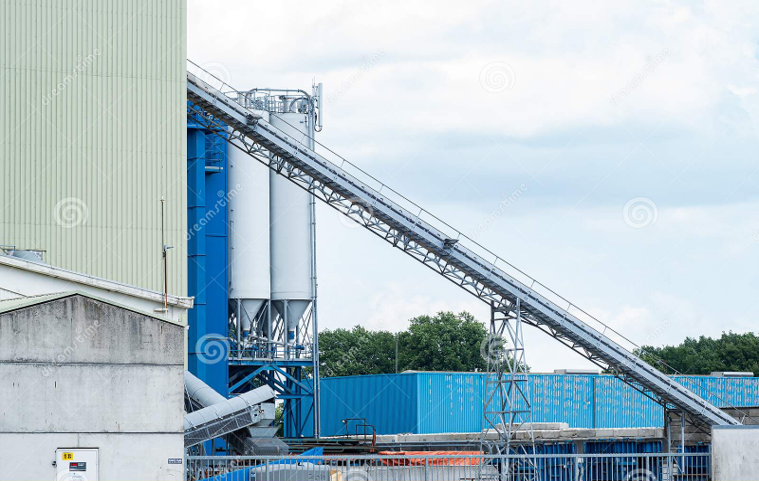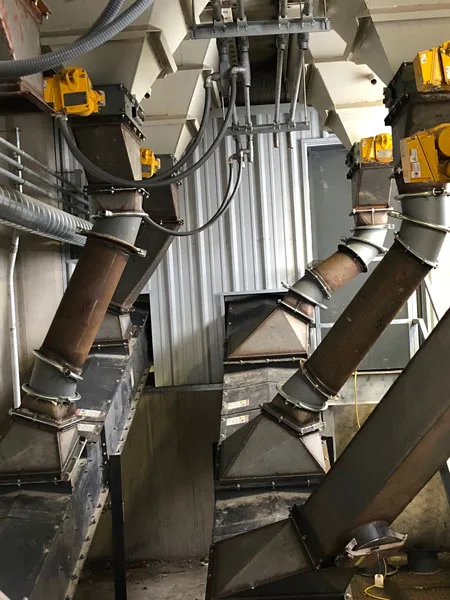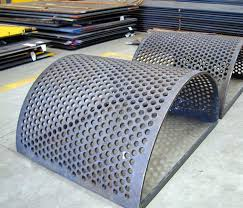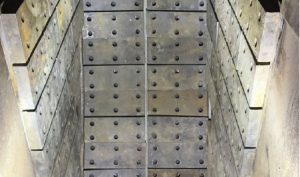The function of chuting is to convey product which flows by means of gravity along predetermined flow paths in and outside the facility.
Straight Chuting
Depending on the rate at which the product has to be conveyed, the size of the system will vary between 230 x 230mm to approximately 450 x 450mm. Should the chuting be installed at an inclination of 35 as is usually the case, a tonnage of 150ton/hour is required, a chute of 300 x 300mm will be used. At the same incline a lager chute would therefore be able to handle a greater tonnage. Although the vertical chutes can therefore in fact be smaller than the sloping chutes for the same tonnage, e.g. 150ton/hour, only one sized chute is normally used throughout a facility in order to promote standardization and consequently to facilitate maintenance. Chutes are normally manufactured from mild steel and are between 3 and 5 mm thick.

Chuting Cushions
Where great lengths of vertical chuting are used, the product falls a great distance and at high speed which may result in a high degree of breakage. In order to reduce breakage, product cushions are installed in the vertical chuting which thus break the fall of the product and form a soft buffer. In both cases breakages is reduced.
Chuting Bends
Where a single chute changes direction it is essential to provide a bend-section which complies with the required specifications. The bends are always provided with a rubber inspection lid in order to remove any blockages which may occur here. Since product normally impinges on the walls of the bend with some force, it is very important to provide a product cushion in order to avoid breakage.

Wear Plates
Due to the high friction which develops between the bottom and sides of the sloping chutes and the flowing product, the chuting tends to wear out rapidly. After one season such a chute may already have worn through. In order to save on maintenance costs, specially hardened steel or other synthetically based material is used on the bottom and lower part of the sides of sloping chutes as well as on bends.
Although methods vary from one agricultural firm to the next, many of them make use of a removable wear plate – insertion which fits tightly inside the chute and covers the bottom and approximately 75mm of sides. The wear plate is mounted on a rubber base and then secured to the bottom and side plates of the chuting by means of counter sunk bolts. Should signs of wear now be apparent, the upper part of the chute can be removed and the plate replaced.
 |
 |